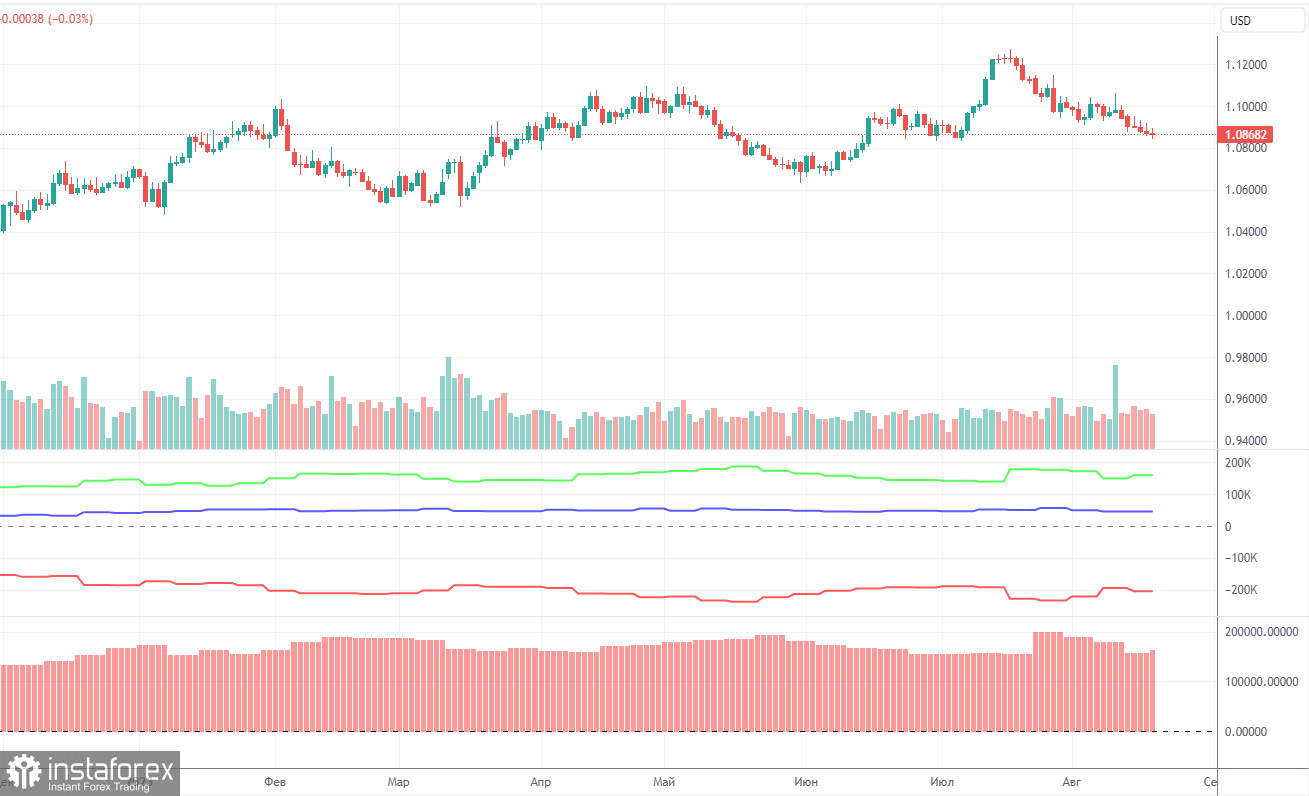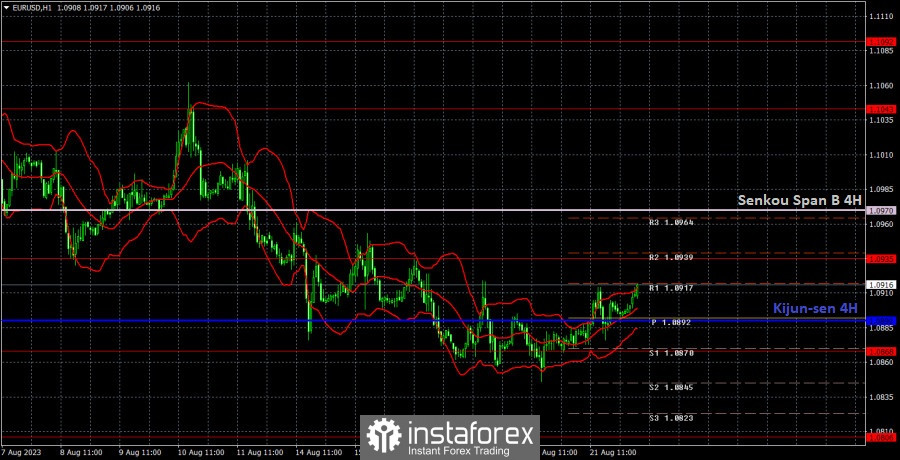Analysis of EUR/USD 5M

On Monday, EUR/USD showed the same movement as last week - low volatility, no trends, and false signals. Basically, the initial factor is exceptionally low volatility, as it is the reason why we have neither trends nor strong signals. However, this is far from the complete list of what is currently missing. There are no economic reports, no fundamental events, and market participants have no desire to trade. All of this results in quite mixed up movements, so traders should understand the market conditions before they proceed. Yesterday, volatility was only 45 points.
Speaking of trading signals, we can only take note of three Kijun-sen line breakouts, each of which, of course, turned out to be false. In the first case, the pair could not even rise by 15 pips, so the long position closed at a small loss (for those who opened it and even entered the market yesterday). In the second case, the pair fell a bit more than 15 pips, so traders had the opportunity to set a Stop Loss at break-even. The third signal was not formed, but it should not have been executed anyway.
COT report:

On Friday, a new COT report for August 15 was released. Over the last 11 months, COT reports fully corresponded to what is happening in the market. The chart above clearly shows that the net position of major traders (the second indicator) began to grow in September 2022 and at about the same time the euro started rising too. In the last 6-7 months, the net position has not risen but the euro remains at very high levels. At the moment, the net position of non-commercial traders is bullish and remains strong. The euro keeps climbing against the US dollar (in the long term).
I have already mentioned the fact that a fairly high value of the net position signals the end of an uptrend. This is also confirmed by the first indicator where the red and green lines are very far from each other. Usually, it precedes the end of the trend. During the last reporting week, the number of long positions of the non-commercial group of traders increased by 4,400 and the number of short ones fell by 5,600. The net position grew by 10,000 contracts. The number of long positions is higher than the number of short ones of non-commercial traders by 160,000. This is a very large gap as the difference is almost threefold. Even without COT reports, it is obvious that the euro should decline but speculators are not in a hurry to sell.
Analysis of EUR/USD 1H

On the 1H chart, the pair broke out of the sideways channel, where it had spent two weeks, but the downward movement is very weak, and the euro aims to enter a corrective phase. This week, the euro may try to correct towards the Senkou Span B line. The macroeconomic background is quite weak, so there is no reason for the market to increase activity.
On August 22, traders should pay attention to the following key levels: 1.0658-1.0669, 1.0762, 1.0806, 1.0868, 1.0943, 1.1043, 1.1092, 1.1137, 1.1185, as well as the Senkou Span B line (1.0970) and Kijun-sen (1.0890). The lines of the Ichimoku indicator can move during the day, which should be taken into account when determining trading signals. There are support and resistance levels that can be used to lock in profits. Traders look for signals at rebounds and breakouts. It is recommended to set the Stop Loss orders at the breakeven level when the price moves in the right direction by 15 pips. This will protect against possible losses if the signal turns out to be false.
No important reports or events lined up in the EU and the US. Most likely, we should brace ourselves for another low-volatility day, so there is no reason to expect significant price changes. Federal Reserve officials will speak, but this may not be enough to stir some market reaction.
Description of the chart:
Support and resistance levels are thick red lines near which the trend may end. They do not provide trading signals;
The Kijun-sen and Senkou Span B lines are the lines of the Ichimoku indicator, plotted to the 1H timeframe from the 4H one. They provide trading signals;
Extreme levels are thin red lines from which the price bounced earlier. They provide trading signals;
Yellow lines are trend lines, trend channels, and any other technical patterns;
Indicator 1 on the COT charts is the net position size for each category of traders;
Indicator 2 on the COT charts is the net position size for the Non-commercial group.
 English
English 
 Русский
Русский Bahasa Indonesia
Bahasa Indonesia Bahasa Malay
Bahasa Malay ไทย
ไทย Español
Español Deutsch
Deutsch Български
Български Français
Français Tiếng Việt
Tiếng Việt 中文
中文 বাংলা
বাংলা हिन्दी
हिन्दी Čeština
Čeština Українська
Українська Română
Română

